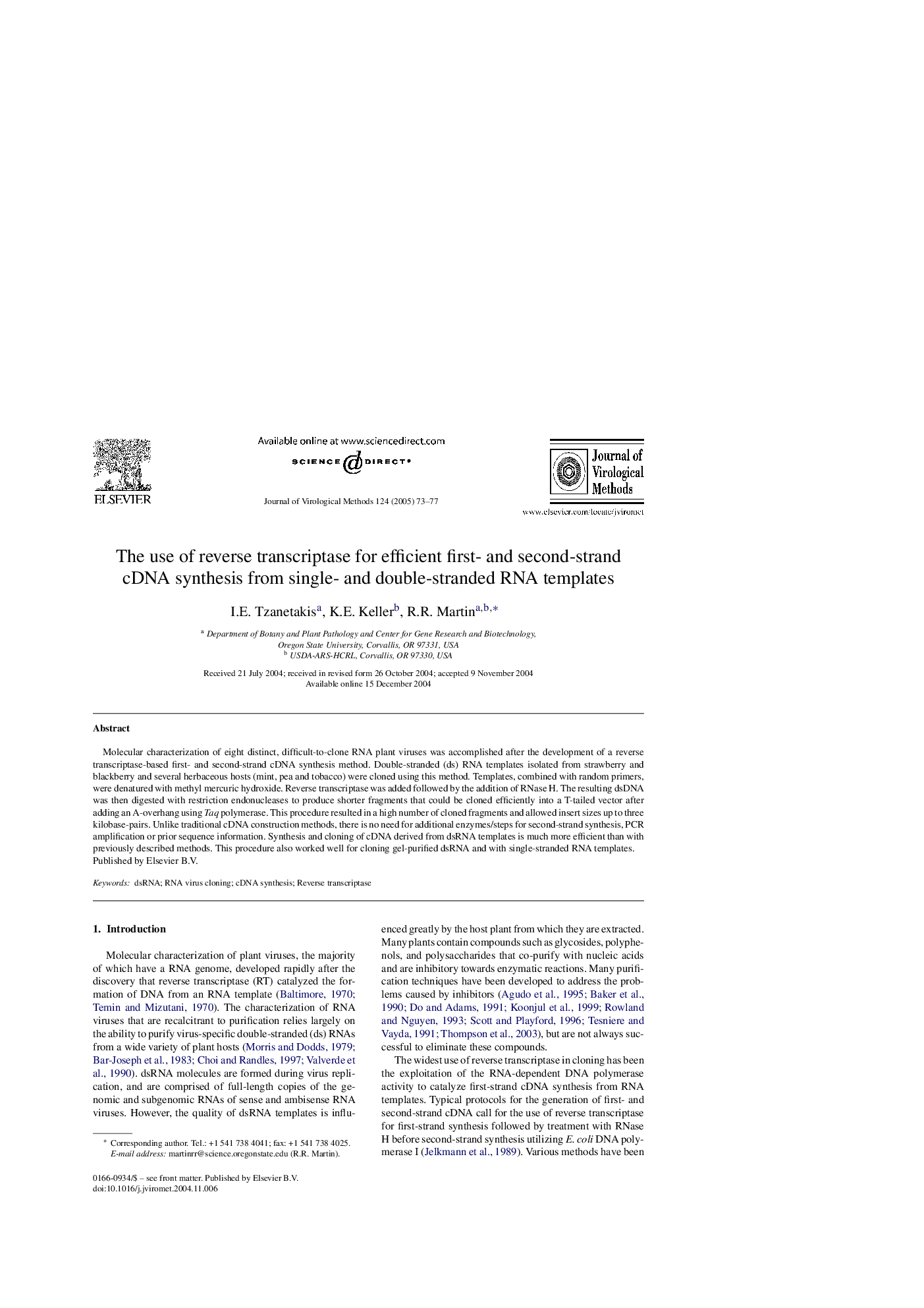| Article ID | Journal | Published Year | Pages | File Type |
|---|---|---|---|---|
| 9279496 | Journal of Virological Methods | 2005 | 5 Pages |
Abstract
Molecular characterization of eight distinct, difficult-to-clone RNA plant viruses was accomplished after the development of a reverse transcriptase-based first- and second-strand cDNA synthesis method. Double-stranded (ds) RNA templates isolated from strawberry and blackberry and several herbaceous hosts (mint, pea and tobacco) were cloned using this method. Templates, combined with random primers, were denatured with methyl mercuric hydroxide. Reverse transcriptase was added followed by the addition of RNase H. The resulting dsDNA was then digested with restriction endonucleases to produce shorter fragments that could be cloned efficiently into a T-tailed vector after adding an A-overhang using Taq polymerase. This procedure resulted in a high number of cloned fragments and allowed insert sizes up to three kilobase-pairs. Unlike traditional cDNA construction methods, there is no need for additional enzymes/steps for second-strand synthesis, PCR amplification or prior sequence information. Synthesis and cloning of cDNA derived from dsRNA templates is much more efficient than with previously described methods. This procedure also worked well for cloning gel-purified dsRNA and with single-stranded RNA templates.
Related Topics
Life Sciences
Immunology and Microbiology
Virology
Authors
I.E. Tzanetakis, K.E. Keller, R.R. Martin,
